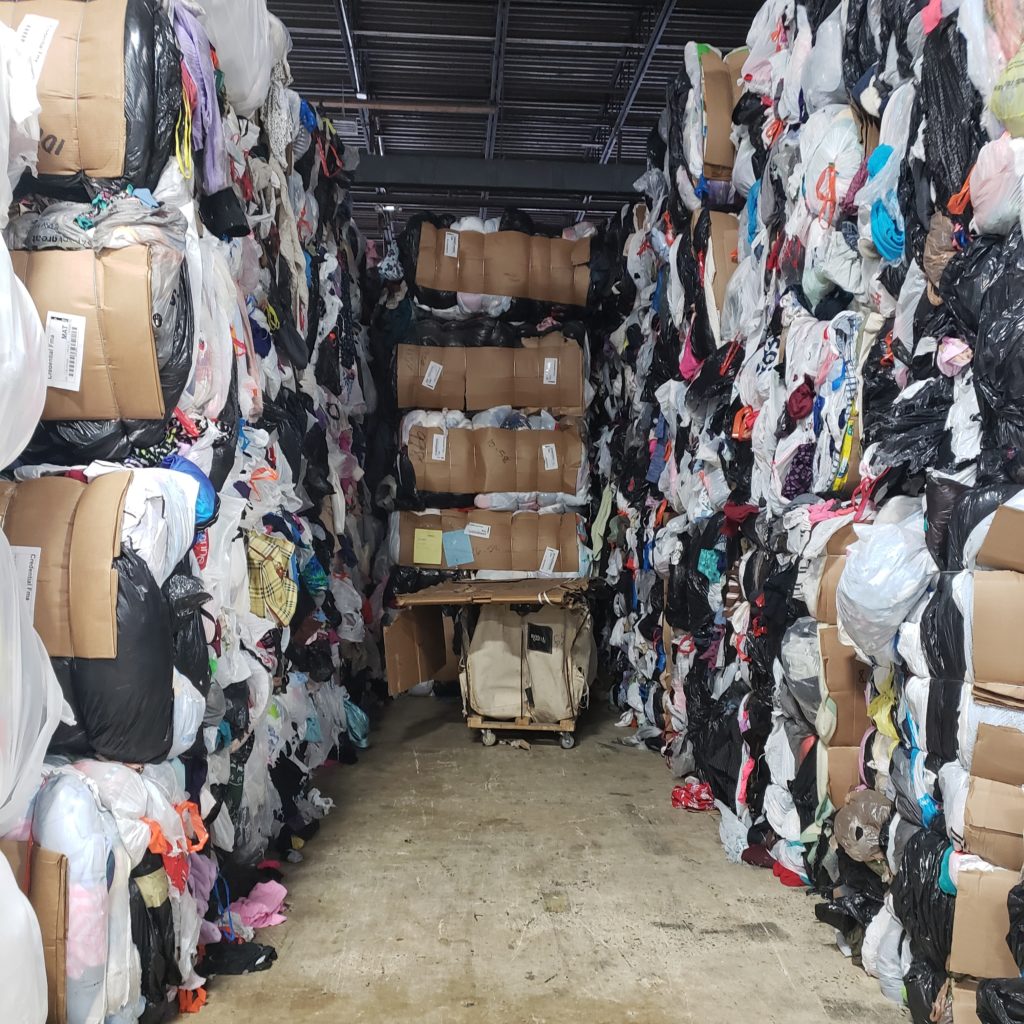Where do recycled clothes go?
When our clothes are threadbare and no longer spark joy, it may be time to clear them from your closet. For those that aren’t usable anymore, recycling is an option. But where do recycled clothes go?

Donating your clothes is a great first step to reducing the waste of your wardrobe. According to the U.S. Environmental Protection Agency estimates that Americans only recycle 15 percent of discarded textiles. This leaves more than 13 million tons of tossed textiles in landfills, which makes up an estimated 9 percent of total landfill waste.
But when clothes are stained, misshapen and worn, nobody wants to buy them. Luckily, there are recycling programs to give new life to clothes that are not rewearable. Big retailers like H&M have started recycling programs in attempts to counteract the waste accumulated from fast fashion. Goodwill recycles used clothes that are not re-sellable.
But where do your recycled clothes go?
Along with the big retailers and organizations like Goodwill, many cities will have large containers or pop-up collection sites where you can leave your unwanted textiles and other clothing items like shoes.
“For any bag you collect, 50 percent is going to be wearable and 50 percent is going to be used for other purposes,” said Adam Baruchowitz, founder of Wearable Collections, a non-profit based in Brooklyn, New York, that runs clothing collection hubs throughout the city.
After they are collected, these bags of clothes are sorted into wearable and unwearable items, either by a sorting facility or by the organization itself. Quality, wearable items will be resold, sometimes to used clothing markets overseas.The items that are no longer wearable, however, are picked up by processing facilities for a small fee.
Though there is a wealth of tossed textiles, there is not a lot of money to be made off of sorting the materials. “It is still considered the waste of the used clothing collection industry,” Baruchowitz says. “[Processing facilities] don’t really pay for that stuff, but might they pay for the shipping to take it off your hands.”
At the processing facilities, the recycled clothes are shredded, treated and repurposed for acoustic dampening materials, carpet padding and insulation. Sometimes old textiles can be cut up and turned into rags for the automobile industry. Because the recycling process stretches and weakens the fibers, only a small percentage of recycled clothes are used to create new textiles. H&M’s sustainability report for 2016 showed that only 0.7 percent of their fabrics were created from recycled materials.
“It goes through a grinding process and then a treatment product depending on what it’s going to be used for,” says Serge Lazarev, founder at Green Tree Textile Recycling in New York City. “If you lift up the carpet in the truck of your car, you will see that insulation material there. It looks like blue hairs.”
Even if the fabrics do not go towards new clothes, recycling clothes can keep them out of the landfill.
“It takes a long time for [clothing] to decompose if it can decompose at all,” Lazarev says. “When you can pick it up and recycle it, it gets a second life as another material, and recycling creates jobs.”
There are some restrictions to what materials can be recycled. Baruchowitz and Lazarev both say that Spandex, Lycra and other materials are difficult to process. “When elastic and rubber mixed in with the textile material, we don’t have a way to separate it,” Lazarev says.
This is especially concerning considering that clothing blended with elastic is becoming more and more popular, but Baruchowitz says there are new technologies are working towards improving the sorting and recycling process. “We’re waiting on a technological breakthrough,” he says.
When it comes to finding a place to recycle your old clothes, you can bring your textiles to Goodwill, or you can drop them off at one of the retailers that have recycling programs, including H&M, Levi’s and The North Face. Check online for any in-store specifications; Madewell, for example, recycles jeans specifically to be used as insulation in houses built with Habitat for Humanity.
You can also seek out an organization like Green Tree Textile Recycling or Wearable Collections in your area. If you are looking for a little more guidance, consult with your local government. “The municipalities will often have a list of companies around the area,” Lazarev says.
By recycling your clothes, you reduce some of the waste accumulating in landfills around the world, but it is hardly a panacea for global textile waste. The real solution is take care of your clothes so they don’t end up in a landfill it the first place, and to consume — and waste — less.
